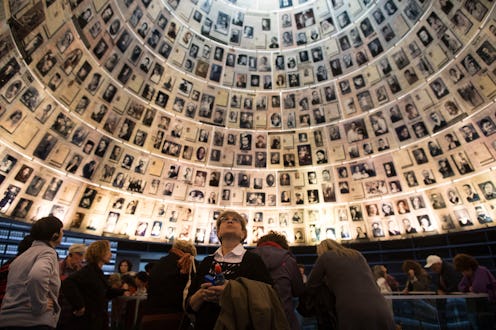News
WWII War Crimes Docs Went Public Today
Thousands of suspected war criminals were investigated and documented after World War II, but, until now, the archive has been locked away by the United Nations. On Thursday, the U.S. Holocaust Memorial Museum made the U.N. War Crimes Commission archive public. For the first time ever, museum visitors will be able to learn about the thousands of war crimes committed by Nazis during WWII, from Adolf Hitler down to low-level bureaucrats who helped facilitate the concentration camps.
Until now, only historians and investigators were privy to the information in the archive's documents, and even researchers at the U.N. had to obtain permission from their governments to access the files. What started out as investigations intended to bring thousands of war criminals to justice ended up falling by the wayside when the War Crimes Commission was shut down in 1948. Cold War politics eventually replaced WWII fallout as priority number one.
"Most Holocaust perpetrators were never held accountable before the law," Paul Shapiro, director of the museum's Center For Advanced Holocaust Studies, told the Associated Press. "Many of them were recruited by various governments for work during the Cold War. I don’t want to say only by Western governments, because Soviets also recruited scientists and others."
But now, with the opening of the archive in the museum's research room, the public's awareness of these perpetrators and their monstrous crimes is serving some long overdue justice. Submitted by 17 member nations as evidence for investigating, arresting, and trying any potential war criminals, the U.N. files include about 500,000 digitized images, more than 10,000 case files in multiple languages, and 37,000 names belonging to a central registry of war criminals and suspects, including some who were stationed at death camps like Auschwitz.
A Former Hungarian Leader
According to the archive's file, a charging document listed Miklos Horthy, who served as Hungary's prince regent throughout WWII, for leading an attack against Yugoslavia in 1941, which involved "massacres, murders, and torture." Hungary was allied with Nazi Germany at the time.
"The Hungarian authorities at once began to send masses of the Serbian population and Jews to concentration camps," the account states. "In April 1944, Jews from this region of Yugoslavia were rounded up and handed over to the German Gestapo and SS troops. The great majority of these Jews died or were killed at the death camps."
Even though the former autocrat was considered one of Hitler's closest allies, a new statue of Horthy was unveiled in Budapest last November, a clear reflection of the country's troubling current attitudes toward the Holocaust and anti-Semitic sentiment.
The Holocaust Was More Widespread Than Most People Think
Hungarian and Yugoslavian files in the archive reveal that the mass murders extended beyond the concentration camps in occupied Poland. Several documents report Hungarian leaders rounding up Serbians and Jews in various areas of the Balkans and executing them.
One especially horrific account, of the Novi-Sad case from January 1942, described the execution of a group of 100 to 150 Serbians and Jews along the Danube River. They were hand-selected by a committee of Germans and Hungarians, stripped of their clothes in cold temperatures, and executed by rifle and bayonet.
"Among the victims were a great number of children, even babies, whose mothers held them firmly to their breasts in the hope of protecting them from death and from the cold," the file stated. "It was a scene of horror, ringing with the screams of the mothers and the victims."
A Former Secretary-General of the U.N. Was Charged in the Files
Another war crime suspect included in the charging documents was Kurt Waldheim, who served in the German army in WWII. But some people know him as the secretary-general of the U.N. in the 1970s. How could someone charged with Nazi war crimes become the leader of the very organization that had archived the charges — the very organization that was formed to prevent the events of WWII from repeating?
The secret nature of the U.N. war crime records also kept Waldheim's Nazi connection a secret, and it wasn't discovered until 1986 when he ran for president of Austria (he was elected and served until 1992). Waldheim was never tried and the charges against him were never proven. He is currently prohibited from entering the U.S., although we have no jurisdiction to indict him.
Images: Wikipedia Commons
